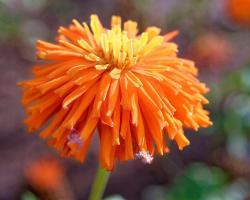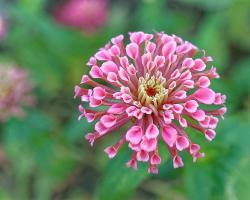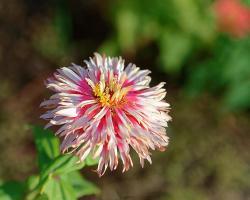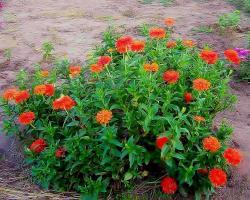Hi, enjoyed/enjoy reading and learning here. I usually grow commercial zinnia seeds every year for cut flowers. I noticed a comment from someone that the largest came from a California giants mix. I have usually been somewhat disappointed with the California giants mixes that I have purchased in that I was not only looking for large flowers, but with those that I would call fully doubled, or with many petals. I also like to just direct sow my zinnia seeds. However, based on the price of some, I start them indoors. This year that included Benary's Giant mix and Zinderella. Although I wanted to put in the ground and least 12 plants each, I ended up with four (4) Benary plants and three (3) Zinderella due to root eating gnat larvae. (FYI, my State inspector says they are NOT fungus gnats ??, but another type fly gnat, and he named them, but I forgot the name as I was going to verify that he was in fact giving me correct information.)
The Zinderella are supposed to be the crested or powderpuff types. Only one of the three produced the powderpuff type flowers; the others only produced single flowers, which was very disappointing to me. I also direct sowed about a 7' or 8' row of what is called 'Candy Mix' and was supposed to be the crested type, but all produced single flowers. I think this frustrated my plans and hopes of doing a little manual pollinating and saving of seeds, and so I gave up hope this year.
I usually also grow a mix of the Cactus type. So first question, I noticed I could get the Cactus type in a tetraploid version. I'm guessing this will not cross with the other types? Either way, should the tetraploid version cross with itself or be a seed producer from open pollination?
On a like note, so then you mentioned in one of your posts that the Zahara series (Zinnia marylandica) will not cross with the others. But from any knowledge here (since you ZenMan, made an indication that you do not grow them); are seeds easily harvested from the Zahara series to produce like?
But my actual and most important question is
regarding color? ZenMan, from what I understand from reading the posts here, is that you don't always isolate, nor save specifically, your seeds in recording individual plants and colors, etc. But from what you can recall, do you have any knowledge input about resultant seedling color?
Why I ask this, and would love to know more about color breeding, is because out of those four (4) Zinnia Benary mix, I got one absolutely beautiful red. For the last four years I've grown the Giant Cactus mix, but have yet to see a red of that color, or any red for that matter. Most of the Cactus mix I've grown seem to be orange, with some pink, lavender, yellow and white. I would love to breed into the Cactus mix a red. ZenMan, (or whoever has done some breeding and growing out of the Zinnia seedlings) how would you go about it? Do you think that using for instance an orange Cactus flower as the seed producer x the Benary Giant red would be the best method? From breeding daylilies with respect to color, a RED x ORANGE usually produces one or the other of those two colors or sometimes throws a yellow. Or PINK x RED should also produce reds. Does anyone else often see RED in their Cactus mix. I feel like I can purchase Benary individual color RED, but I haven't seen the Giant Cactus in individual colors.
So then also, which, in your opinion, gives most to the flower form, the seed producer plant; or the pollen donor?
Here's the Benary red:









